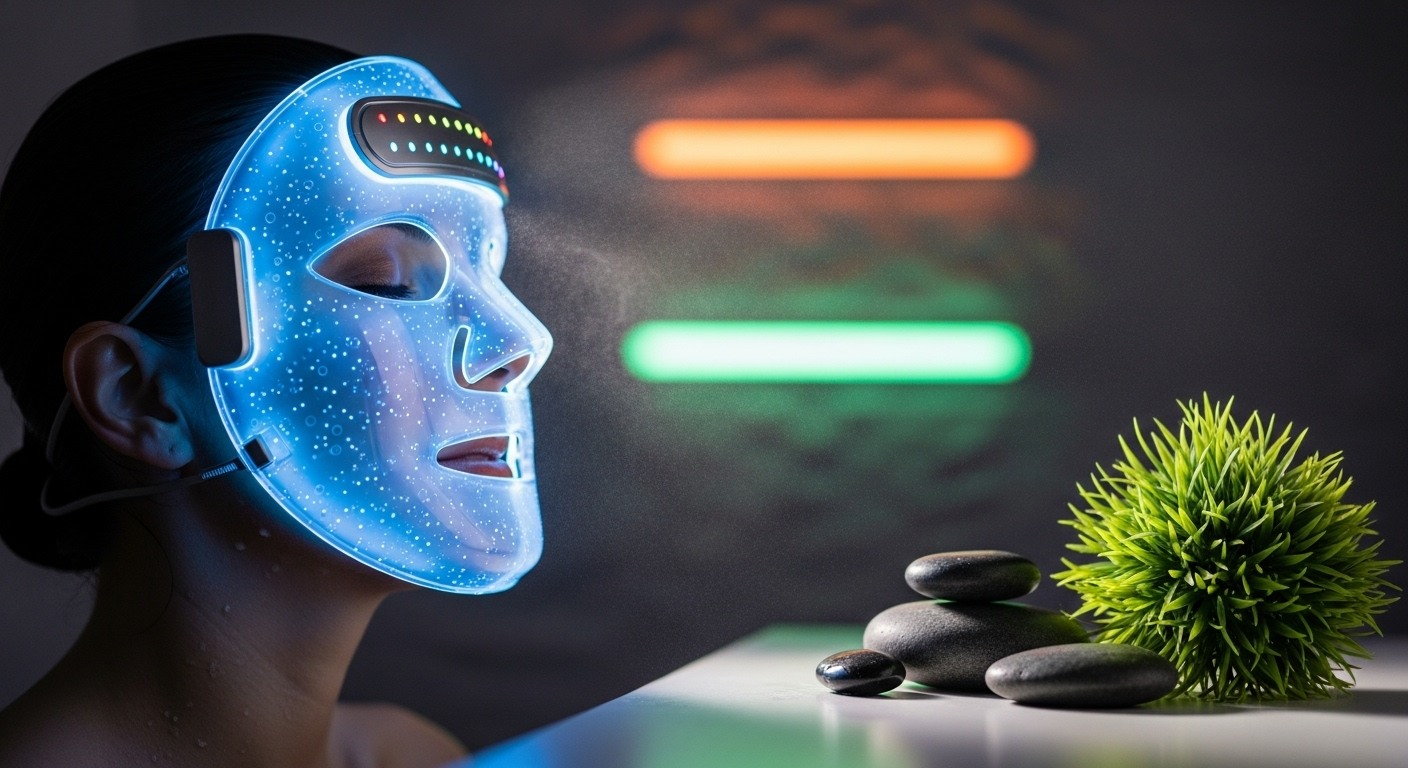Chromotherapy: The Science of Color Healing in Wellness
In the ever-evolving landscape of wellness and self-care, an intriguing practice has emerged that marries the ancient wisdom of color therapy with modern scientific understanding. Chromotherapy, also known as color therapy, harnesses the power of different hues to promote physical, emotional, and mental well-being. This innovative approach to healing has captivated the attention of beauty and wellness enthusiasts, promising a holistic method to enhance overall health and vitality. As we delve into the world of chromotherapy, we'll explore its historical roots, scientific foundations, and practical applications in today's wellness industry.

In more recent history, the 19th-century Swiss psychologist Carl Jung explored the psychological effects of color, laying the groundwork for modern color therapy. His work on color symbolism and its impact on the human psyche paved the way for further research into the therapeutic potential of different hues.
The Science Behind Chromotherapy
While skeptics may dismiss chromotherapy as pseudoscience, emerging research suggests that there may be more to this practice than meets the eye. The fundamental principle of chromotherapy is that different colors correspond to specific frequencies of light, which can influence our biological processes.
Studies have shown that exposure to certain colors can affect our circadian rhythms, hormone production, and even our metabolism. For example, blue light has been found to suppress melatonin production, making it useful for combating seasonal affective disorder but potentially disruptive to sleep patterns when overexposed.
Color Psychology and Emotional Well-being
One of the most well-established aspects of chromotherapy is its impact on our emotional state. Different colors can evoke distinct psychological responses, influencing our mood, behavior, and cognitive function.
Red, for instance, is often associated with energy, passion, and excitement. It has been shown to increase heart rate and stimulate the production of adrenaline, making it a popular choice for enhancing physical performance. On the other hand, blue is linked to calmness and relaxation, potentially lowering blood pressure and reducing stress levels.
Applications in Beauty and Skincare
The beauty industry has embraced chromotherapy, incorporating its principles into various products and treatments. LED light therapy, for example, uses different colored lights to target specific skin concerns. Red light is believed to stimulate collagen production and reduce inflammation, while blue light is often used to combat acne-causing bacteria.
Some skincare brands have even developed color-correcting products based on chromotherapy principles, using complementary colors to neutralize skin discoloration and achieve a more balanced complexion.
Chromotherapy in Fitness and Exercise
The fitness world has also begun to explore the potential benefits of chromotherapy. Some innovative gyms and wellness centers now offer color-themed workout spaces, where the ambient lighting can be adjusted to enhance different aspects of exercise.
For example, a high-intensity interval training session might utilize energizing red lighting to boost motivation and performance, while a yoga class could incorporate calming blue or green hues to promote relaxation and focus.
Incorporating Chromotherapy into Daily Life
Beyond specialized treatments and environments, there are numerous ways to integrate chromotherapy into everyday routines. Simple changes, such as adjusting the color temperature of home lighting or choosing specific colors for workspace decor, can have subtle yet meaningful effects on mood and productivity.
Some chromotherapy enthusiasts recommend “color breathing” exercises, where one visualizes inhaling a particular color associated with a desired emotional or physical state. While the efficacy of such practices may vary, they highlight the growing interest in harnessing the power of color for personal well-being.
Challenges and Criticisms
Despite its growing popularity, chromotherapy faces skepticism from some members of the scientific community. Critics argue that many of the claimed benefits lack robust empirical evidence and may be attributed to placebo effects or other factors.
Additionally, the subjective nature of color perception and individual differences in color associations can make it challenging to establish universally applicable principles of chromotherapy. Cultural variations in color symbolism further complicate efforts to standardize color-based treatments.
The Future of Chromotherapy
As research in fields such as photobiology and neuroscience continues to advance, our understanding of how light and color affect human physiology and psychology is likely to deepen. This may lead to more evidence-based applications of chromotherapy in both clinical and wellness settings.
Emerging technologies, such as smart lighting systems and wearable devices that can adjust color exposure based on individual needs, promise to make chromotherapy more accessible and personalized. As the wellness industry continues to evolve, chromotherapy may well become an integral part of holistic health and beauty regimens, offering a unique blend of ancient wisdom and cutting-edge science in the pursuit of well-being.





